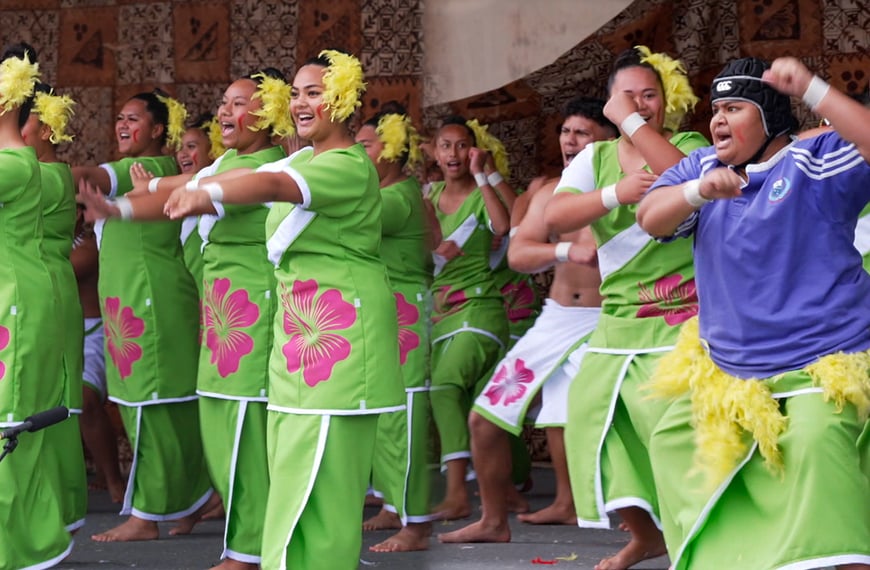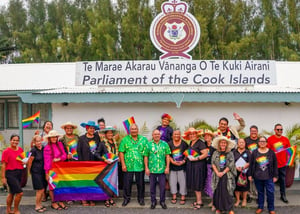Public Interest Journalism funded through NZ On Air
This weekend, a Tuvalu island community will gather in West Auckland to commemorate 80 years since the bombing of their island by the Japanese in World War II (WWII).
While most WWII or Anzac memorial days are typically sombre and a time for quiet reflection, this is not the case for ‘Te Aso o te Paula’ which translates to, The Day of the Bomb.
The Funafuti Auckland Organisation, which represents the Funafuti Island community in Auckland is organising traditional fatele dancing, feasts, ano games and a church service.
Te Aso o te Paula, has been marked every year since WWII ended to celebrate the survival and minimal loss of life on the island.
Tuvalu was, at that time, a significant American naval and air base and the US planned to converge on the Japanese who had occupied the neighbouring Gilbert Islands (Kiribati). The American marines arrived in Tuvalu on Oct 2, 1942 and built an airport that would be the base for a total of 350 aircraft in Tuvalu, then known as the Ellice Islands.
Seven months after the airport in Funafuti had been constructed, the Japanese found out about it after a reconnaissance flight from Kiribati.
According to Peter McQuarrie, author of ‘Strategic Atolls, Tuvalu and the Second World War’ up until then, the Japanese had only checked on the very northern islands of the group.
They were surprised to see an air base in Funafuti and on April 23, 1943 the Japanese bombed the capital island of Funafuti.
“Se fakatau loa. Aso kona, ko aso o te faigata. Aso tafasili te faigata, aso kona, i Funafuti.”
It was hard. Those were difficult times and arduous days on Funafuti, says Auckland’s oldest Funafuti member, 95-year-old Vaisamoa Manoa. She was 15 when the marines arrived in Funafuti and remembers well, te Aso o te Paula.
Speaking in Tuvaluan, Manoa says, the sound of the raid was, “new to the ears… when a bomb fell the ground shook. Also, the tanks were roving down the roads, and the marines were shouting, whistling, and being rowdy.
“The people saw and interpreted that as them being happy, that the war was happening. The islanders however were petrified.”
She recalls that a marine ran out onto the road at the time, calling out to people to take cover during a lull in the bombing but the Japanese soon made another run.
“When those planes came back, the bugle was blown, and also a marine was calling for everyone to go back into their foxholes because the planes were back.
“The squadron came and started bombing Funafuti, one after the other. About four in the morning, the squadron left so the bombing stopped.”
On that morning of April 22, there could have been a great loss of life among the local Funafuti community. Vaisamoa remembers around 40 people had run into the local church for cover.
“Some people ran into the church. But an American soldier came and told them to evacuate the church. The soldier knew that the church would be bombed because it’s the biggest building on Funafuti at the time. As soon as the people left, the bomb fell on the church.”
There was only one casualty on that fateful day amongst the local Tuvaluan community, a man called Esau who had looked up out of his foxhole and was fatally hit by shrapnel. However two American servicemen also died that day.
The Funafuti community in New Zealand have continued the tradition of Te Aso o te Paula since they migrated to Auckland.
Sanelivi Penileta, as the Ulufenua o Funafuti, leads the local Funafuti Island community.
He says it’s a day to remember the many people whose lives were saved as well as those who were hurt and passed away on that day.
For Vaisamoa, Te Aso o te Paula is a joyful day.
“A latou la e fiafia, me i te tokoukega o tino ne to ki motu, Papaelise mo Funafala. Fiafia ia latou ko ola”
They were happy, mostly because the majority of the people were on the islets, Papaelise and Funafala. They were happy they survived.










